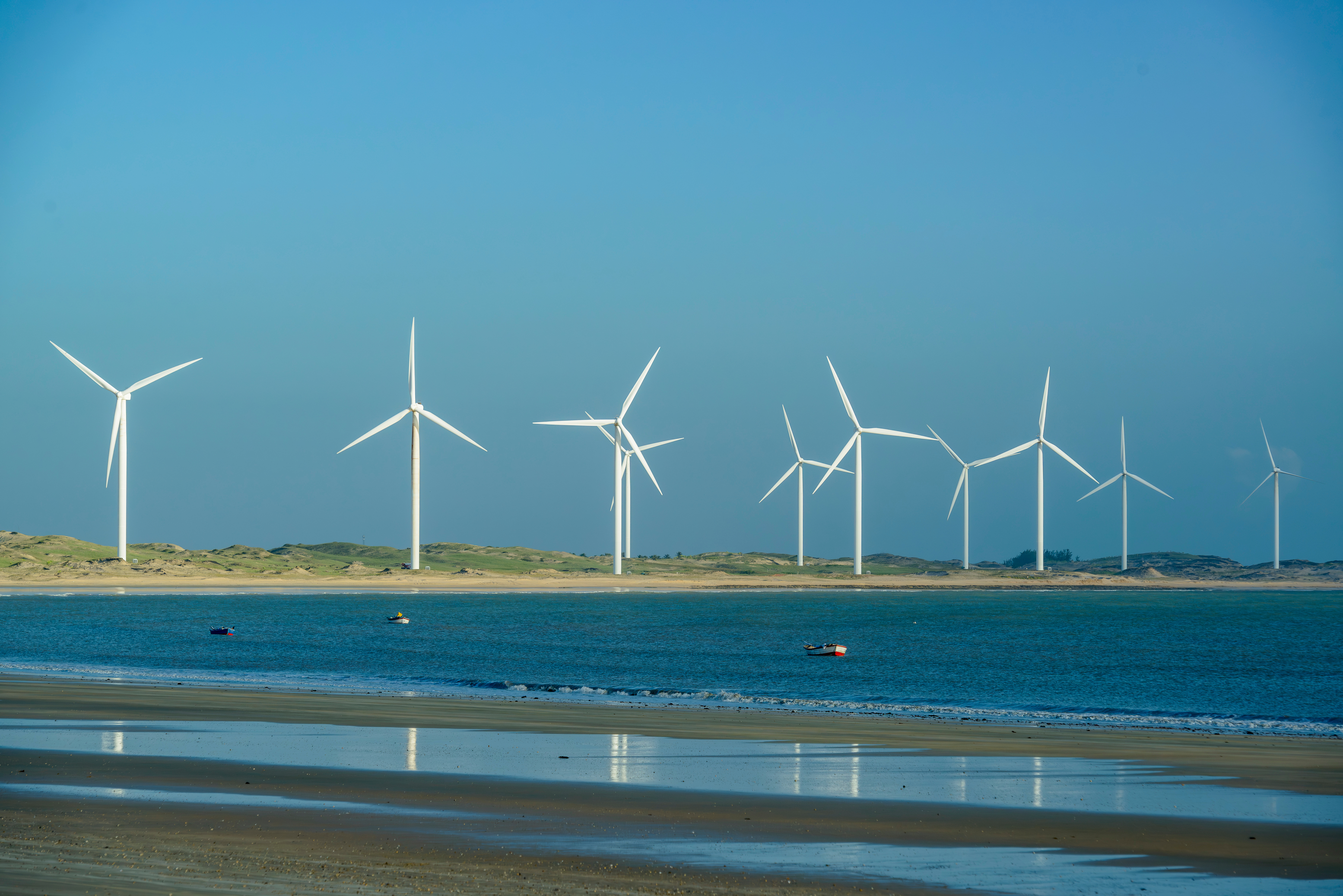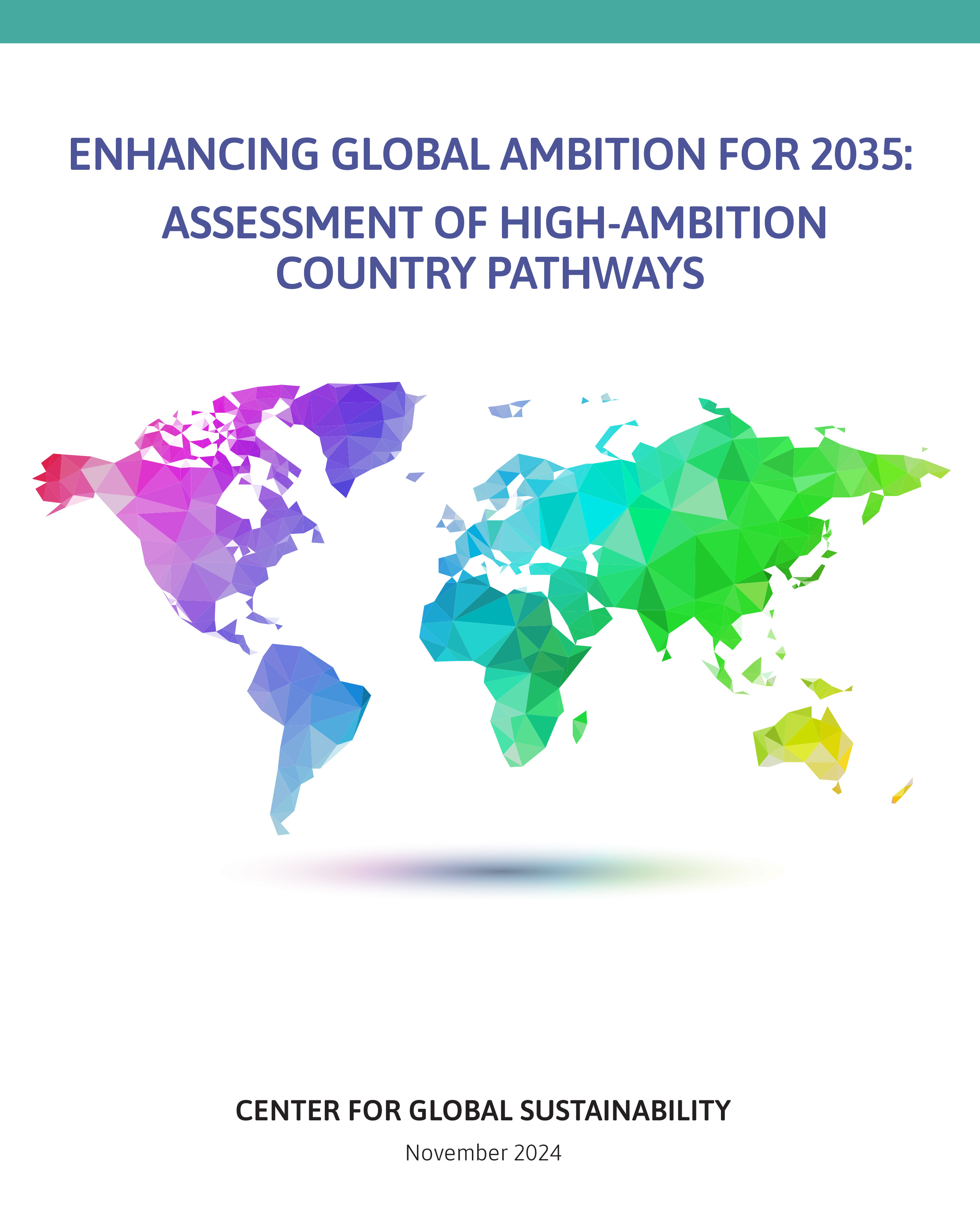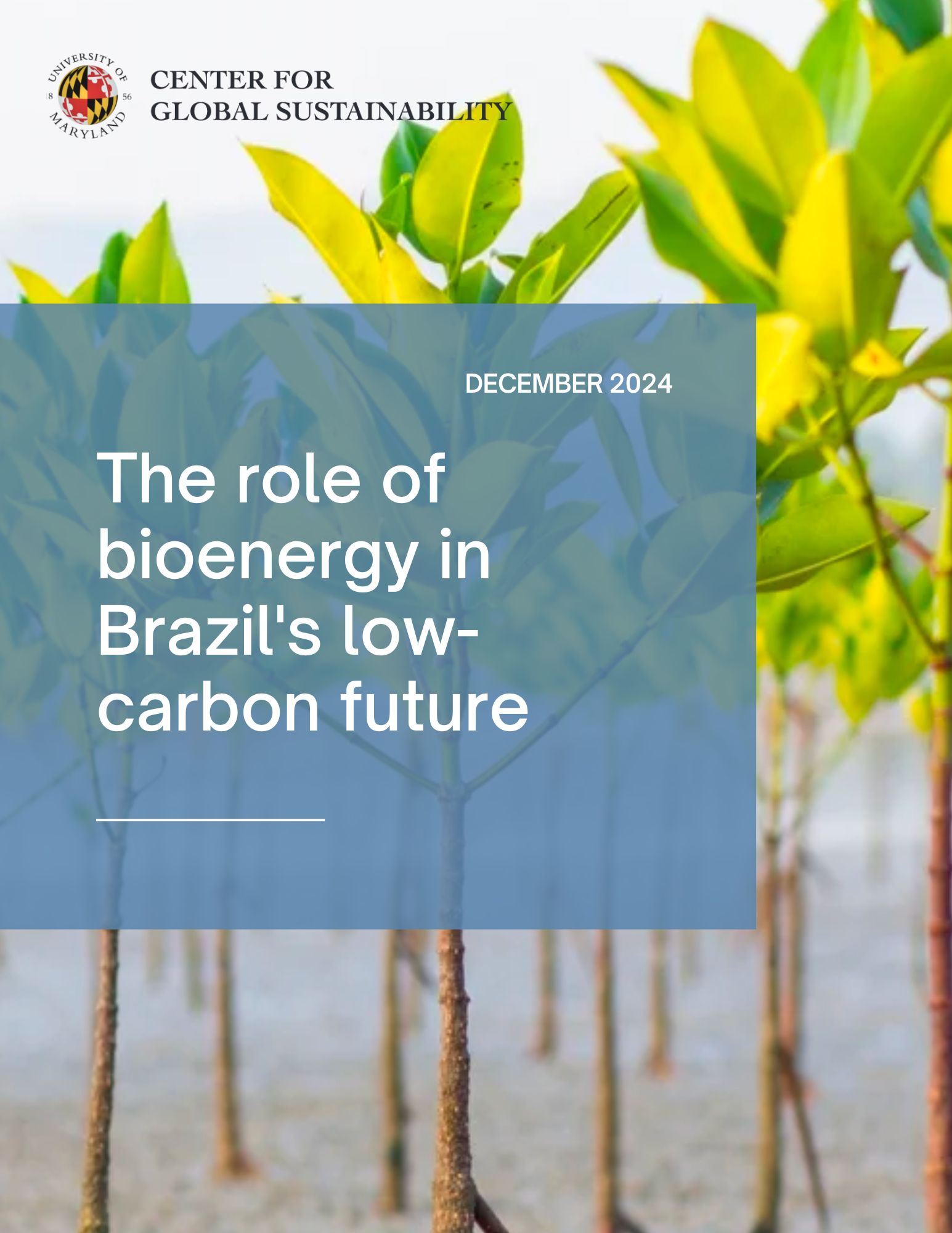Our High Ambition pathway for Brazil shows a 72-76% (including Land Use, Land Use Change and Forestry (LULUCF)) reduction in greenhouse gas (GHG) emissions from 2005 levels and net-zero land-use CO2 emissions by 2035. Brazil has announced its 2035 Nationally Determined Contribution (NDC) target to reduce emissions by 59–67% from 2005 levels.1 Its 2030 NDC target commits to a 53.1% reduction from 2005 levels and net-zero emissions by 2050.2 Brazil’s GHG emissions including LULUCF peaked in 2004, and declined by 46% from 2004 to 2023.3 Meeting its 2030 target requires an average annual emissions reduction rate of around 7% through 2030, a reversal from the emissions increase observed since 2010.
Emissions in Brazil in 2022 stemmed from LULUCF CO2 (37%), methane (25%), and transportation CO2 (11%), making mitigation in these sectors critical to meet climate goals.3,4 Key mitigation strategies include: halting illegal deforestation; increasing afforestation and reforestation; accelerating end-use electrification with targeted bioenergy application in hard-to-electrify sectors; and scaling up wind and solar generation. Due to the large contribution from non-CO2 gases, meeting the Brazilian government’s net-zero GHG emissions by 2050 goal requires complimentary CO2 and non-CO2 mitigation efforts. Faster and deeper reductions in CO2 and potentially net-zero carbon emissions around 2040 will be needed while researching and developing methods for abating hard to decarbonize sectors like livestock methane.
2035 Target: Total GHG Emissions Reductions
via CGS High Ambition Pathways
-72 to -76%
Relative to NDC Base Year
2005
Official 2035 NDC target
-59 to -67%
Official 2030 NDC target
-53.1%
Net zero target
2050
A High Ambition 2035 target for Brazil shows a 72-76% reduction in total GHG emissions, including LULUCF, from 2005 levels (Figure 1). In the High Ambition pathway, the 2025 target (1.32 GtCO₂e or 48.4% reduction compared to 2005) is slightly missed, the 2030 target (1.20 GtCO₂e) is exceeded by 14-18%, and the pathway achieves a 72-76% reduction from 2005 levels in 2035 through emissions reductions across all sectors. Land-use CO2 emissions reach zero in 2035 and become negative, while remaining GHG emissions also approach zero towards 2050, as carbon dioxide removal in the energy sector — made possible by Brazil’s large bioenergy potential — offsets remaining N2O and CH4 emissions. The High Ambition pathway requires all sectors to contribute to emissions reductions through 2035, while Brazil’s 2035 NDC does not specify sectoral contributions and the higher end of the target range could potentially be met without comprehensive cross-sectoral efforts.
Brazil's GHG emissions, including LULUCF, decreased by over 23% from 2005 to 2023, with significant variation across sources.3 Total GHG emissions (incl. LULUCF) strongly declined from 2005 to 2010 (from around 2.5 to 1.3 Gt CO2e), largely due to reductions in deforestation, and then gradually increased back to 1.8 Gt in 2020. LULUCF CO2 emissions dropped sharply until 2010 due to reduced deforestation but rose again by 2020.4 Non-LULUCF CO₂ emissions increased until 2015, declined through 2020, and peaked again in 2021. By 2022, LULUCF CO2 was the largest contributor of emissions (37%), followed by methane (25%), transport (11%), N₂O (10%), and industry (6%).3,4 Brazil’s NDC targets for 2025, 2030, and 2035—1.32 GtCO₂e, 1.20 GtCO₂e, and 0.85–1.05 GtCO₂e—imply reductions of 32%, 39%, and 46-56% from 2023 levels, respectively. Overall, the 2025 target is likely to be missed; however, the 2030 target could be achieved primarily through land-use CO2 reductions. Achieving the lower end of the 2035 target will require emissions reductions across all economic sectors.
As of 2024, 87% of Brazil’s electricity generation came from renewable sources, with wind and solar accounting for 15% and 10%, respectively (Figure 2). Fossil fuels accounted for 11%, including 7% from gas and 2% each from coal and oil, while the remaining 2% was generated from nuclear energy.9 Although Brazil’s power sector is already relatively clean, further decarbonization could deliver additional short-term emissions reductions. A near full phase-out of fossil fuels (mainly gas) seems feasible, given the large share of hydro generation (55%), which can complement increasing shares of solar and wind.
Under the High Ambition scenario, 95% of Brazil’s electricity generation comes from renewable sources by 2035, achieved by maintaining hydro generation at 2024 levels, increasing solar and wind buildout, phasing out coal, and reducing gas generation. Specifically, power sector transitions under the High Ambition pathway include:
- Maintaining wind and solar deployment at 15 GW/year through 2030, and increasing it to 23 GW/year between 2030 and 2035.
- Increasing the share of renewable generation to 95% by 2035.
- Phasing out coal by 2030.
- Reducing gas generation by 54% by 2035 from 2024 levels.
Brazil is Latin America’s top producer of oil, largely due to an abundance of oil reserves and the successful development of offshore fields.11,12 Brazil has been a net oil exporter since 2017.12 As a result, total oil supply is expected to continue growing through 2026,12 which could create further risks for the economy to be locked into carbon-intensive business models that might not be sustainable. Under our High Ambition pathway for Brazil, domestic coal demand declines by 16% by 2035 from the 2024 level, while gas demand decreases by 21% by 2035, and oil demand decreases by 15% and 27% by 2030 and 2035, respectively (Figure 3).
Citations
Brazilian Government. Brazil’s NDC. National Determination to Contribute and Transform. (2024).
The Government of the Federative Republic of Brazil. Brazil First NDC 2023 Adjustment.
https://unfccc.int/sites/default/files/NDC/2023-11/Brazil%20First%20NDC%202023%20adjustment.pdf (2023).
Gütschow, J., Pflüger, M. & Busch, D. The PRIMAP-hist national historical emissions time series (1750-2023) v2.6.1. Zenodo
https://doi.org/10.5281/zenodo.15016289 (2025).
Hoesly, R. et al. CEDS v_2025_03_18 Gridded Data 0.5 degree. Zenodo (2025)
Ministério da Ciência, Tecnologia e Inovação. Emissões de GEE por Setor.
https://www.gov.br/mcti/pt-br/acompanhe-o-mcti/sirene/emissoes/emissoes-de-gee-por-setor-1 (2023).
Climate Observatory. The Greenhouse Gas Emissions and Removals Estimation System - Sistema de Estimativa de Emissão de Gases (SEEG).
https://plataforma.seeg.eco.br/?highlight=br-net-emissions-by-sector&_gl=1*wq3k9d*_ga*MTkxMTAyMDg2NS4xNzIxOTAxMjYx*_ga_XZWSWEJDWQ*MTcyMTkwMTI2MS4xLjEuMTcyMTkwMTMwNy4wLjAuMA (2024).
Ember. Electricity Data Explorer - Open Source Global Electricity Data. Ember (2025).
NGFS. NGFS Climate Scenarios for Central Banks and Supervisors - Phase V. The Central Banks and Supervisors Network for Greening the Financial System (NGFS) (2024).
Electricity Data Explorer. Brazil. Ember
https://ember-energy.org/data/electricity-data-explorer (2025).
KPMG & Kearney. Statistical Review of World Energy, 73rd Edition. Energy Insitute
https://www.energyinst.org/statistical-review/resources-and-data-downloads (2024).
Central & South America. Oil supply. IEA
https://www.iea.org/regions/central-south-america/oil (2022).
Brazil. Energy system of Brazil. IEA
https://www.iea.org/countries/brazil (2023).
Our Work


